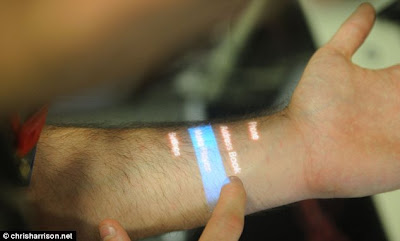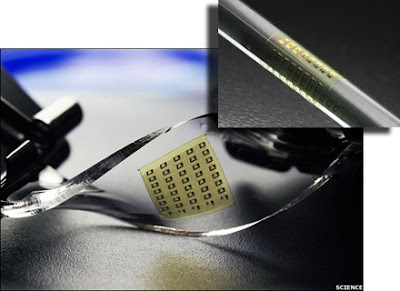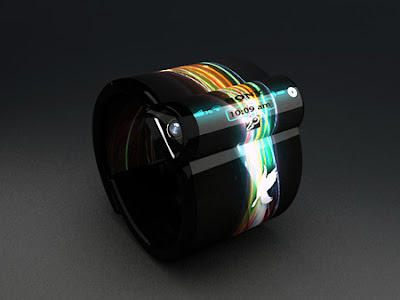Skinput gadget turns your own ARM into a touch screen display
Skinput gadget turns your own ARM into a touch screen display
Those who find the touch screens on their ever shrinking gadgets too fiddly to handle, will be glad to hear scientists are developing a new touch surface... your own arm.
Developers at Microsoft Research and Carnegie Mellon University are working together to create an armband that projects an interface directly on to your skin.
They have combined a mini projector which creates a changing display with a sophisticated sensor that can tell which part of your arm is being tapped.

Skinput could solve the problem of ever shrinking gadget screens
Skinput could recognise a telephone number being typed out on a hand
Skinput could recognise a telephone number being typed out on a hand

The researchers showed Skinput can be used to control audio devices, play simple games like Tetris, make phone calls and navigate simple browsing systems.

The gadget effectively turns your arm into a touch screen surface by picking up various ultra-low sounds produced when you tap different areas.
Different skin locations are acoustically distinct because of bone density and the filtering effect from soft tissues and joints. The team then used software that matched sound frequencies to specific skin locations.
If the prototype isn't resting on the arm, it uses wireless technology like Bluetooth to transmit the commands to the device being controlled, such as a phone, iPod, or computer.
The sensor picks up two types of acoustic signals - transverse waves created by the rippling of skin as its tapped and longitudinal waves that travel through the soft tissue of the arm and excite the bone.
The armband prototype can be combined with an MP3 player and used to change the song or volume level.

Currently, the acoustic detector can detect five skin locations with an accuracy of 95.5 per cent, which would be high enough for many Smartphone applications.




Comments